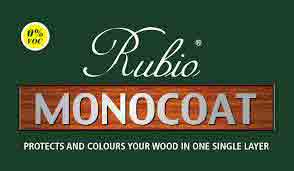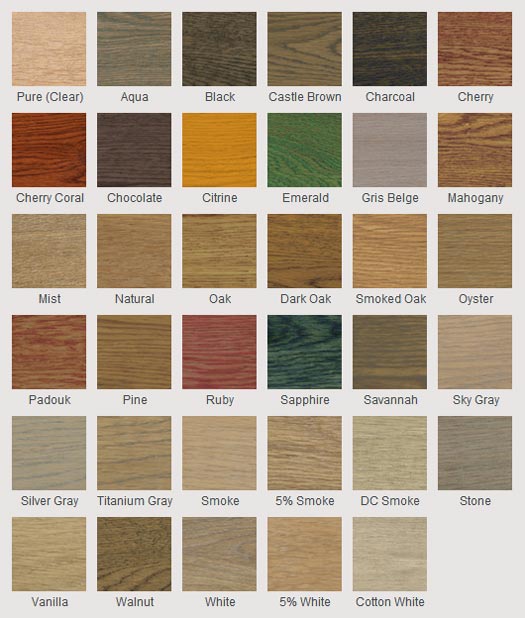|
|
|
Rubio Monocoat Flooring Finish Rubio Monocoat is GreenRubio Monocoat Natural Oil Flooring Finish is the leading plant-based, environmentally responsible, sustainable, nonpolluting, single-coat, durable wood flooring finish in the industry.
Rubio Monocoat contains 0% VOC and has no effect on indoor air quality. Monocoat does not contain:Formaldehyde Ammonia Acetone Solvents Preservatives Odor-masking agents Chemical residuals Heavy metal drying agents: Arsenic Beryllium Chromium Cadmium Nickel Lead Monocoat does contain:
Natural Plant Oils Modified Plant Oils Natural Waxes Modified Natural Waxes Non-aromatic Hydrocarbons - 0% VOC Lead-free Catalytic Dryers Organic Pigments Why Rubio Monocoat?
- 100 % VOC-FREE! - Respects the natural look and feel of the wood - Low consumption - No starting marks or overlaps - 46 standard colors - Easy to maintain - Doesn t contain water - For use on all kinds of wood - Durable protection, highly resistant to wear For clean-up of hands and accessories simply use warm water and soap. Natural Plant Oil Finish Stain Color SwatchesClick a color to enlarge All sample colors are applied on White Oak Flooring Castle Brown Charcoal Cherry Coral Cherry Chocolate Citrine Cornsilk Cotton White Provided that the room is well ventilated, the surface is usable after 36 hours. Areas with very heavy traffic can be protected with cardboard during the first week, but only during the traffic period. Rubio Monocoat Oil Plus is 100% environmentally friendly. There are no specific measures to be taken for transport by road, sea or air. Rubio Monocoat Oil Plus colors and protects your wood in one layer. Unlike traditional hardwax oils, Rubio Monocoat Oil Plus will connect with wood fibers by means of a molecular reaction, a result of which a durable protection is obtained. This molecular connection enables Rubio Monocoat Oil Plus to embed in the surface s upper microns immediately. The wood fibers can only combine with a certain amount of oil. Oil, which has not reacted, does not adhere and needs to be removed. After treatment with Rubio Monocoat Oil Plus, the floor requires 3 weeks to harden completely. During the first week, it is advisable to only clean with a vacuum cleaner or a dust mop. Do NOT use damp cloths! After the second week, a damp cloth soaked in clean water and wrung out thoroughly, can be used with due care. After 3 weeks, the floor can be maintained using maintenance products from the Rubio Monocoat range.  Environmental Benefits of Wood Floors
Check out these environmental facts about wood floors:
Frequently Asked Questions: EnvironmentalDoes wood flooring
promote a healthy indoor environment? Yes. Bacteria, dust and dirt do not embed themselves in wood flooring, as they do in other flooring options. Simple regular maintenance—such as dustmopping, sweeping, or vacuuming—keeps wood floors dust-free. My client suffers from allergies. Is wood flooring hypoallergenic? Millions of people suffer from sensitivity to chemicals and toxins. Tests by leading allergists have proven that wood flooring provides a healthier environment for these allergy sufferers. Wood doesn't harbor irritating dust and microorganisms. Is the natural environment protected during the harvesting and manufacturing
of wood flooring? Yes. Far from a depleting resource, hardwood is sustainable and commercially more available now than ever before. On the 486 million acres of forestland in the United States classified as commercial, substantially more wood is added in new growth each year than is harvested. For hardwood species, 90 percent more wood is added annually in net growth than is removed through harvest. Once installed, how
often must wood flooring be replaced? Every hundred years or so. In fact, the heart pine floors in historic Bacon's Castle in Virginia are more than three centuries old and counting. Simple care and maintenance keeps wood floors looking beautiful for a lifetime. Instead of laying an entirely new floor when the original is worn, wood floors can be rejuvenated with sanding and refinishing. When done by a wood flooring professional, wood floors need only to be refinished every 10 - 15 years or 10 - 12 times during a floor's life. When a wood floor's useful life is over, it's completely biodegradable. Is recycled wood flooring available? Yes. Wood salvaged from a variety of sources, including old barns and factories, is a popular design trend. Wood recovered from riverbeds is another growing segment of the wood flooring industry. Logs that sank during logging operations years ago are being recovered by a number of companies and used to create truly unique flooring. Today's only significant source for heartwood from long-leaf pine is through reclaimed timbers from warehouses and factories constructed during the late 1800s and early 1900s. Chestnut, hemlock, poplar, walnut, and cypress are other options. Learn more about the environmental benefits of wood flooring. Eco Flooring Zero Voc What are VOCs and
why are they important?
Monocoat all-natural oil wood floor finishes are plant-based, VOC-free and completely non-toxic oil finishes of extraordinary durability. Available in clear finish and more than 30 color finishes, all apply evenly in a single coating. All Monocoat finishes are easily maintained, and provide a subtle lustre that reveals and complements, rather than covers, the natural grain and patina of the wood. A REVOLUTIONARY TECHNOLOGY Monocoat adheres with the first microns of wood by molecular bonding. As a result, Monocoat Natural Oil can cover an average 400 sq. ft. of floor per liter. And because of molecular bonding, no surface film can form, and no variable saturation can occur. Not only is a second coat not required, the finished wood will not accept a second coat. The same action protects against overlaps and color variance and causes the process to complete in one coat. EASY TO TOUCH UP Monocoat Natural Oil finish bonding technology allows local touch up of damaged areas or scratches, because only the free wood fibers will take the touchup coating. |
|
|


 life (Source: University of Wisconsin Wood Products Program Solid Wood Flooring Life Cycle Analysis)
life (Source: University of Wisconsin Wood Products Program Solid Wood Flooring Life Cycle Analysis)